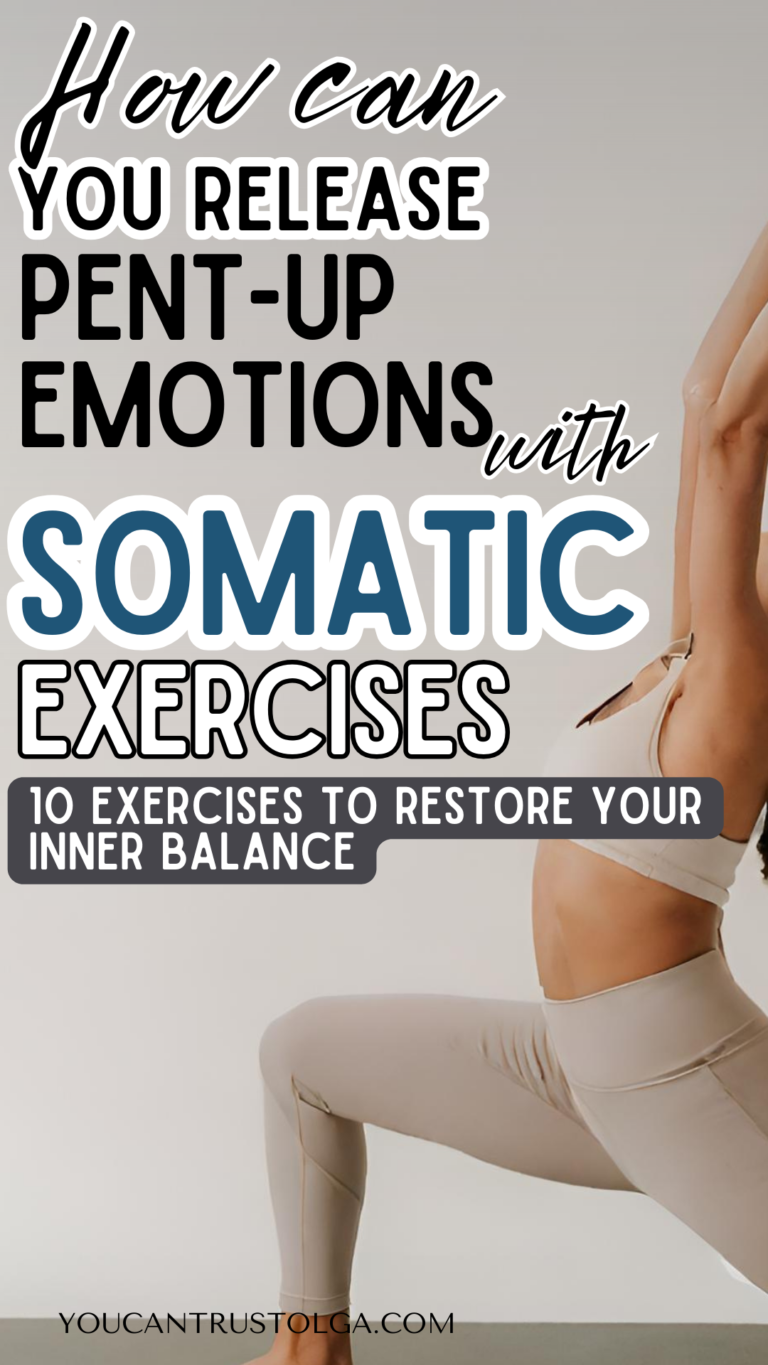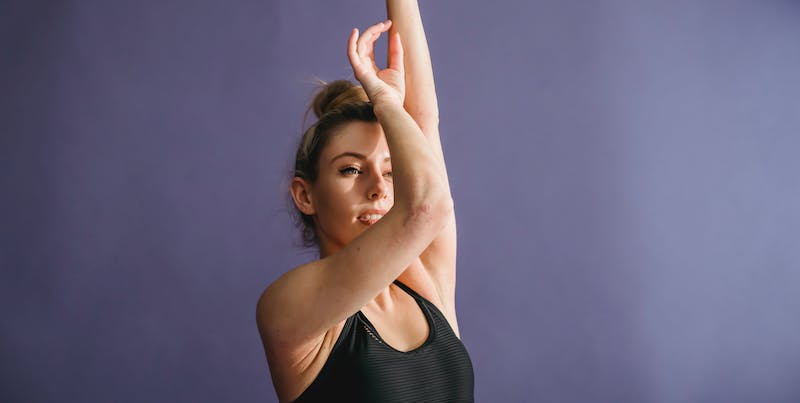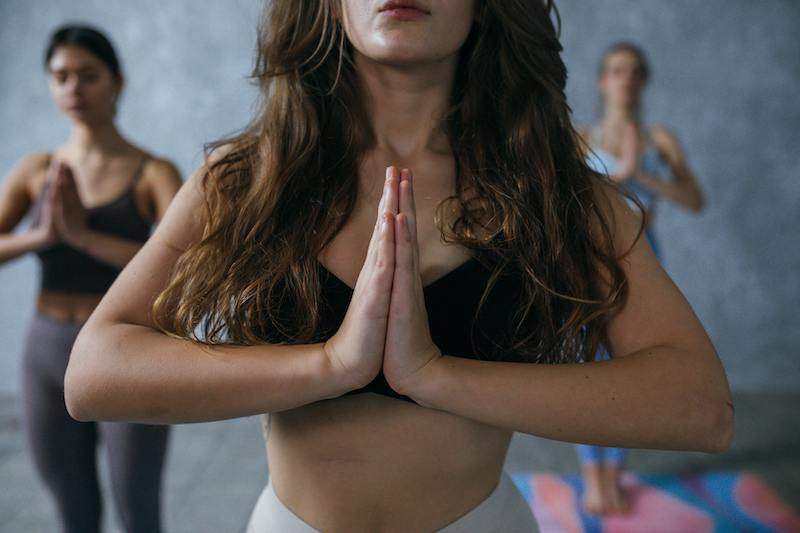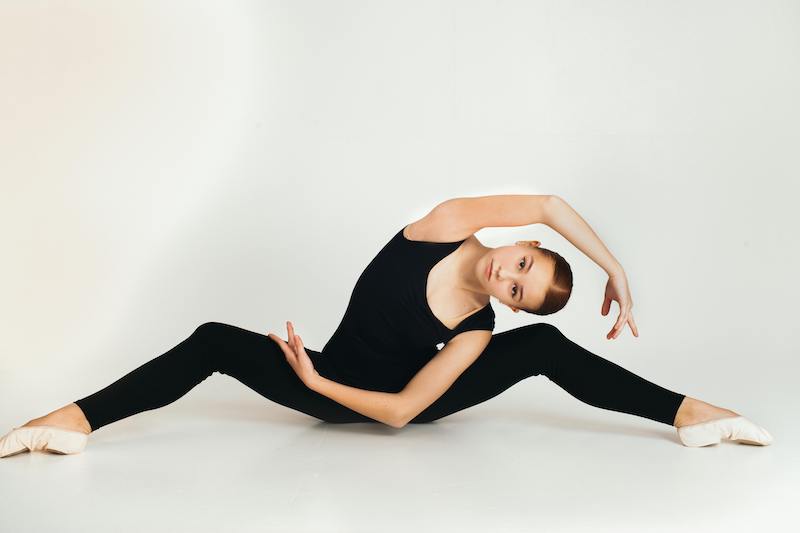It is well known that when we experience negative emotions that are not present only on a mental level, they are also manifest in our body. This mind-body connection has been studied and observed by researchers for centuries, with the famous quote “Healthy Mind, Healthy Body” being a testament to its importance.
In this article, we will explore somatic exercises that help you to tune into your body’s wisdom and release any negative emotions that may be stored there.

What Is Somatic Release Exercise?
Our body is constantly sending us signals through physical sensations, which can be interpreted as a response to our thoughts and emotions.
Somatic therapy assumes that trauma or unprocessed feelings can have physical manifestations, such as muscle tension, discomfort, or even pain. Its techniques leverage these bodily sensations to target the storage of negative emotions that need to be released.
Anxiety, depression, and PTSD are all indicators that strong emotions you once experienced are still with you, stored in your body.
The best way to understand how somatic therapy works is through the concept of a “BODY LOOP.” When we experience stress or anxiety, our bodies may respond by tensing up. In turn, these tense muscles can send signals to our brain that there is danger, causing us to become even more anxious. This leads to a vicious cycle of tension and anxiety, which can be difficult to break.
Somatic therapy aims to disrupt this cycle by using physical techniques such as breathing exercises, body movements, and touch therapy.
Through simple somatic exercises, you can re-establish a sense of safety in your body, which immediately reflects on how you perceive life, others, and yourself.
10 Effective somatic release exercises
The exercises you’ll discover here are part of a somatic therapeutic approach. They aim to release trapped traumatic energy by using purposeful movements and increased body awareness. By engaging in intentional movements and practicing mindfulness, these exercises help calm the nervous system and promote the integration of our mental, physical, and emotional well-being.
1. Grounding techniques
Grounding techniques are incredibly powerful somatic healing exercises that serve as an anchor, grounding us to the present moment when painful memories or anxiety threaten to consume us.
By focusing on our senses, grounding exercises help to bridge the gap between our mind and body, allowing us to reconnect and find solace in the present.
Whether it’s focusing on the sensation of our breath, the feeling of our feet firmly planted on the ground, or the calming rhythm of our heartbeat, grounding techniques provide a sense of stability and security that allows us to navigate through challenging emotions with greater resilience.
Examples of Grounding Exercises:
~ Take a slow walk, paying attention to the sensation of your feet connecting to the ground. Notice the pressure of every step you take.
~ Run water over your hands, noting the temperature and how it brings comfort.
~ Gently hug yourself or wrap in a cozy blanket to feel physically at ease and connected to the Earth’s energy.
~ Try grounding sheets or mats that plug into your home’s electrical outlet to absorb the Earth’s energy.
~ Stroke a pet’s fur, tuning into the warmth and texture.
~ Squeeze a stress ball, focusing solely on the pressure.
~ Listen to calming music, allowing the melody to bring you peace
Earthing Grounding Mat
When going outside for a walk isn't an option, a grounding mat can serve as a convenient substitute or addition to your wellness routine. It provides comparable grounding benefits, all from the comfort of your own home.
2. body scan techniques
Body scans can be seen as a form of “active meditation” that aids in relaxation. It is a fantastic way to promote self-awareness and relaxation, aiding in somatic healing. By gently shifting your focus across various parts of your body, you can become more attuned and alleviate any tension or unease.
A five-minute body scan is a sure way to bring yourself into the present moment and become aware of WHAT IS GOING ON IN YOUR BODY.
If you remain consistent and turn it into a small habit, you will rediscover a lot about your body and mind. It is also calming and is a quick way to release both physical and mental tightness.
Why not give it a go?
To practice body scanning:
- Start by finding a comfortable position, perhaps sitting down, and close your eyes.
- Begin by focusing on your lower body, paying attention to how your feet feel on the floor.
- Gradually shift your attention to your ankles, knees, thighs, and pelvis, taking note of sensations like temperature, pressure, and tension.
- Whenever you encounter tension, take a deep breath, exhale, and release it. Once a body part feels relaxed, move on to the next one.
- After completing the lower body, repeat the process with your upper body, including internal organs like your stomach, heart, and lungs.
- Finally, conclude by directing your focus to your neck, head, and face.
3. Visualization Techniques
Visualization is an active technique that involves connecting with positive mental images, promoting healing and serenity for both your body and mind.
By harnessing the power of constructive imagery, you establish a communication channel between your thoughts and physical reactions.
This process enables you to reevaluate experiences on a physiological level, offering relief from distressing images and fostering a healing and harmonious internal state.
Examples of Visualization:
~ In times of stress envision a tranquil and secure place where all tension vanishes.
~ Carve in your imagination the sacred place where you feel totally peaceful and at ease. Go there each time the inner turmoil overwhelms you.
~ Before sleep, conjure a mental image of absolute comfort and relaxation to ease you into a restful and revitalizing slumber.
~ Imagine the morning sunlight infusing energy into every cell of your body, getting you ready for the day.
4. breathing Exercises
Practicing conscious breathing has an incredible impact on calming the nervous system and achieving a sense of centeredness.
By engaging in mindful breathing, you can remain present and prevent anxiety or overwhelming emotions from taking over.
Deep breathing produces remarkable results. Begin with 5-10 minutes each day and gradually increase the duration. Allow yourself time to learn and be patient with the process.
Check out these ideas:
~ Visualize stress leaving with every long exhale, while inhales bring relaxation and peace.
~ Give box breathing a try: inhale for 4 counts, hold for 4, exhale for 4. The balanced intervals provide a centering effect.
~ Engage the diaphragm through belly breathing. Feel it expand by placing hands on the belly during inhales.
Somatic Breathing Necklace
This mindful breathing device aids in stress reduction, anxiety relief, burnout prevention, muscle relaxation, heart rate deceleration, and lung volume enhancement. A good reminder to pause and breath!
5. Progressive muscle relaxation
This gentle but effective practice helps reset your muscles to their natural, relaxed state, reducing tension and discomfort.
Like I said earlier, our body holds a lot of tension and most of it we are not aware of.
For instance, if you’re someone who tends to SUPPRESS ANGER, you might unconsciously find yourself making fists or grinding your teeth at night. These are signs that there’s PENT-UP ANGER inside you.
This unexpressed emotion, when directed inward, can have detrimental effects on your physical well-being, potentially leading to serious illnesses.
Through PMR, you overexaggerate these suppressed movements to release the tension and allow your body to return to a state of balance.
To practice Progressive Muscle Relaxation:
- Start by slowly contracting the muscles in one area for a few seconds.
- Then fully relax and let go.
- Repeat this process a couple of times until you feel the tension melting away.
Squeeze balls can be a great tool to help you start practicing pendulation. Simply hold the squeeze ball in one hand and slowly squeeze it for a few seconds, then release it. As you continue to do this, notice any sensations or emotions that arise within your body.
6. Body Movements
Engaging in gentle movement is a wonderful way to synchronize your body and mind, releasing accumulated tension and fostering a greater sense of comfort within yourself.
Remember to begin at a leisurely pace and prioritize the sensations of your movements rather than achieving flawless form.
Gradually, you will experience a heightened state of equilibrium and wholeness.
Here’s how you can experience Somatic Body Movements:
~ Practice therapeutic yoga poses to connect with your body. Move mindfully, not forcefully.
~ Express your emotions through free dance without judgment. Let your body lead the way.
~ Target specific stretches for areas of tightness. Release tension with gentle movements and deep breaths.
~ Relieve shoulder and neck tension from prolonged screen and desk use with rolls and stretches.
~ Shake your body for 30 seconds to a minute to release trapped tension. It may sound strange, but it really works! Energize yourself with jumping jacks or jogging in place.
~ Consciously experience each step and sensation through walking meditations. Find tranquility by immersing yourself in nature.
Foam Back Roller
This amazing stretching device will take your somatic workout to the next level. The yoga wheel is effective for targeting all areas of the back, from the neck to the lower back. It serves as a therapeutic tool, releasing knots and trigger points for optimal relief.
7. Shaking
Shaking is something we’ve learned from animals. It helps us let out built-up stress and energy, especially when we’ve been through tough times.
When confronted with danger, our responses typically involve fighting, fleeing, or remaining motionless. Freezing serves as our body’s defense mechanism against excessive pain, yet it may confine a significant amount of our survival energy.
Shaking, on the other hand, serves as a means to unlock and discharge this confined energy. This instinctive approach inherited from animals proves beneficial in alleviating the impacts of tough or frightening encounters.
Additionally, it is fun to do, and it is so satisfying that once you start it is hard to stop.
Instructions for Shaking Technique:
- Locate a comfortable space, where no one can see you.
- Rise to your feet and commence shaking your body, starting from your hands and progressively involving your arms, torso, and legs. Visualize as though you are shaking off dust or sand from your body.
- Shake for a few minutes, then gradually calm down, restoring equilibrium to your body.
- Observe the sensations in your body after you have ceased shaking.
8. Butterfly Hug Exercise
The “Butterfly Hug” or “Self-Love Hug” technique was created by Lucy Artigas while assisting hurricane survivors in Acapulco back in ’97. Though commonly used in therapy for trauma healing or like anchoring in NLP, you can also try it out for some self-calming vibes in tough times.
This technique can be a great tool for self-regulation: it calms the nervous system and brings a sense of comfort and safety to the body.
If you’re feeling sad or down and need some comfort, this technique is perfect for you.

Follow these steps:
- Interlace your thumbs and bring your hands across your chest, letting your fingers reach toward your shoulders. Remember, there’s no right or wrong way to do this.
- Allow yourself to settle in and feel the comforting and soothing sensation in your arms.
- When you’re ready, gently tap your hands in a rhythmic motion that feels comfortable to you.
- Alternate the movements of your hands like the flapping wings of a butterfly. Move your hands freely through these gentle taps.
- Continue for as long as you want.
Recognize that this practice may result in a notable emotional release.
If you start feeling emotional or close to tears, it’s completely fine. Accept those emotions and show yourself kindness.
On the other hand, if the method feels calming without stirring intense emotions, keep at it for as long as it benefits you.
9. The Voo Breath
This vocal exercise activates the vagus nerve, promoting feelings of calm and relaxation. It’s highly beneficial for centering yourself during moments of anxiety and stress.
By adjusting volume, duration, and vibration levels, you can discover the most effective approach. This simple somatic practice efficiently brings about a sense of tranquility.
Steps:
- Find a comfortable space and position, whether sitting on a chair or on the floor.
- Direct your attention to your bodily sensations and the present moment. Observe your breath.
- Inhale deeply.
- Exhale while producing a prolonged “voo” sound, feeling the resonance in your abdomen and chest. Feel the vibration.
- Repeat this process multiple times.
10. Containment with safe touch
Using Safe Touch Containment is a nurturing method that employs gentle physical contact to establish feelings of safety and steadiness. It aids in managing intense emotions and fosters inner support and self-kindness.
Examples of Safe Touch Containment:
~ Place your hands together, cradling them gently, then bring them to your heart center. Feel the comforting warmth as you take deep breaths.
~ Embrace yourself in a soft hug with light pressure. Notice the rhythm of your breath within the embrace.
~ Cover your lap or torso with a gentle weighted blanket for a calming effect on overwhelming emotions.
~Lie on a pillow or cuddly toy to release tension. Experience relief through its softness.





